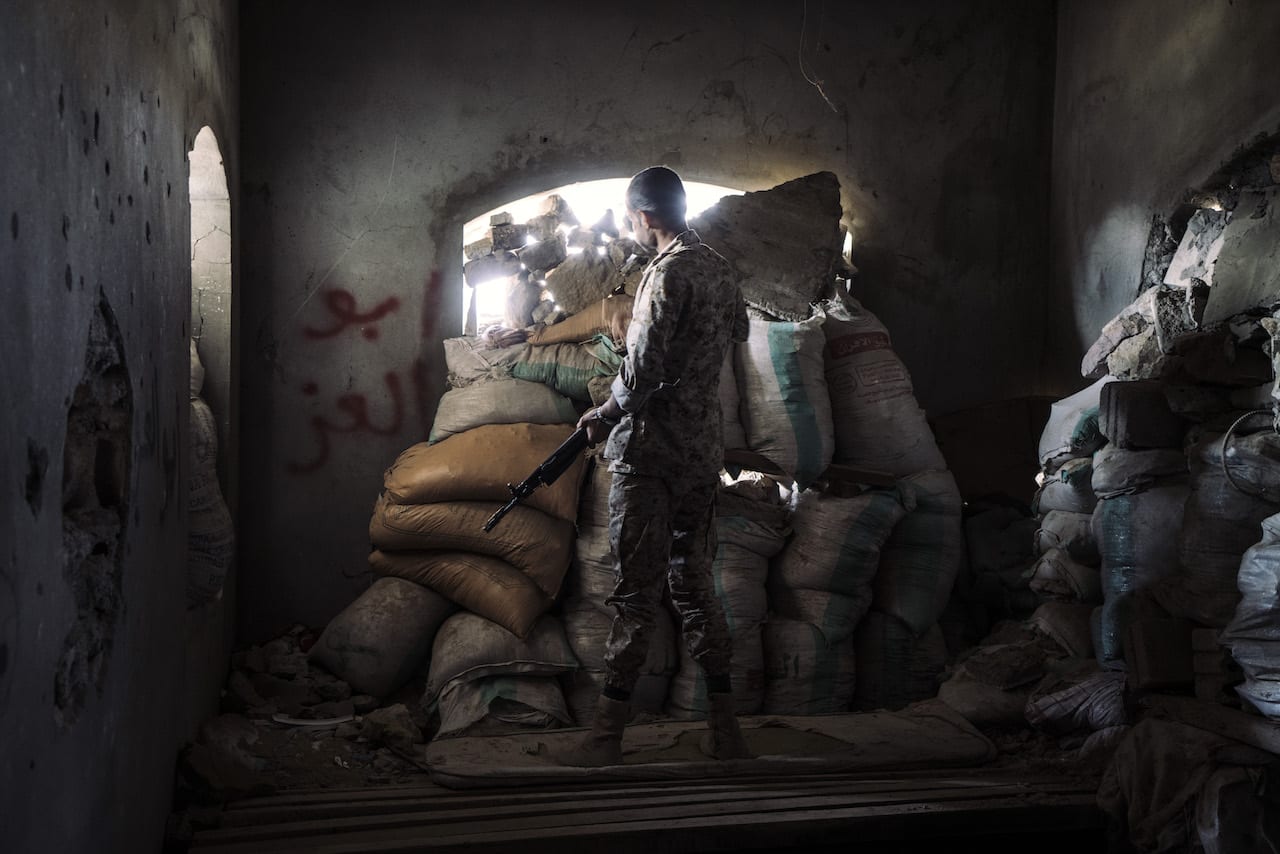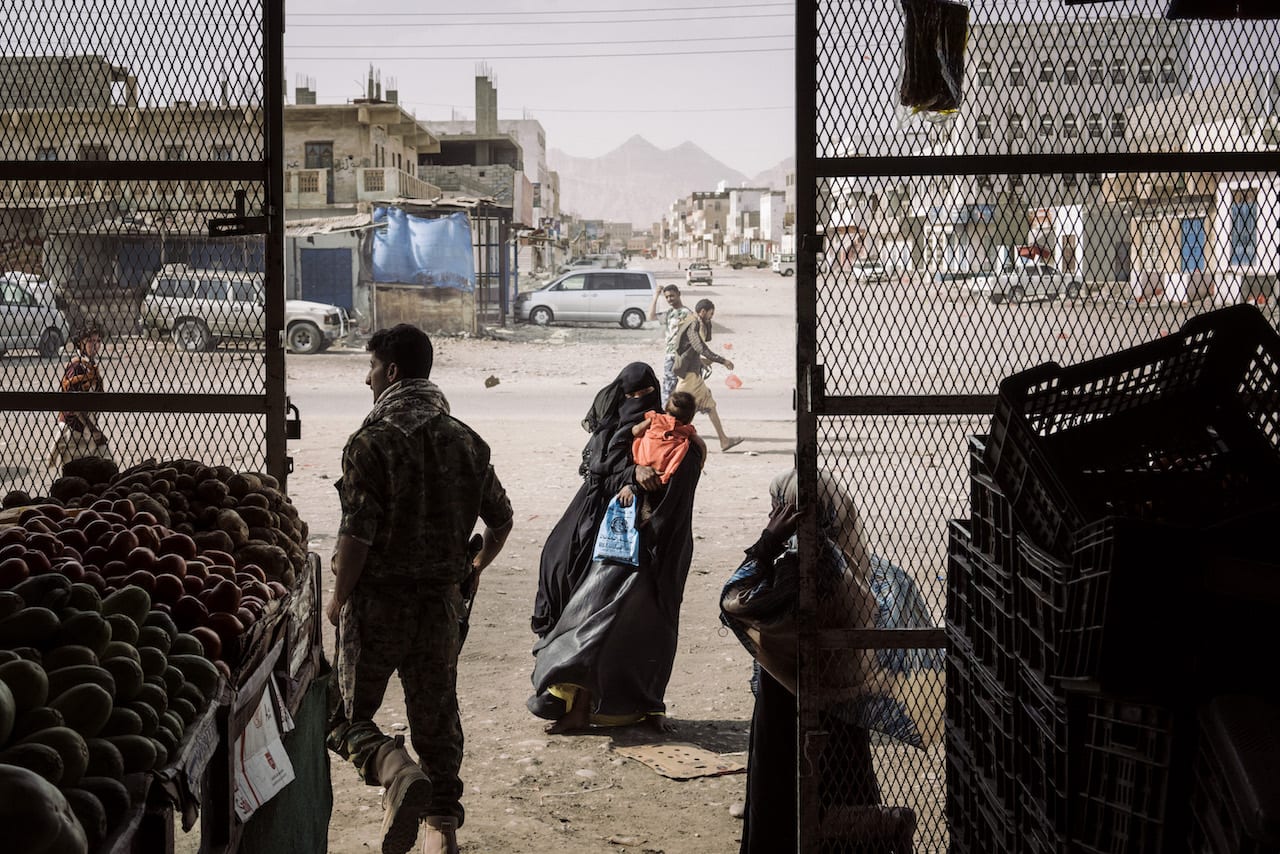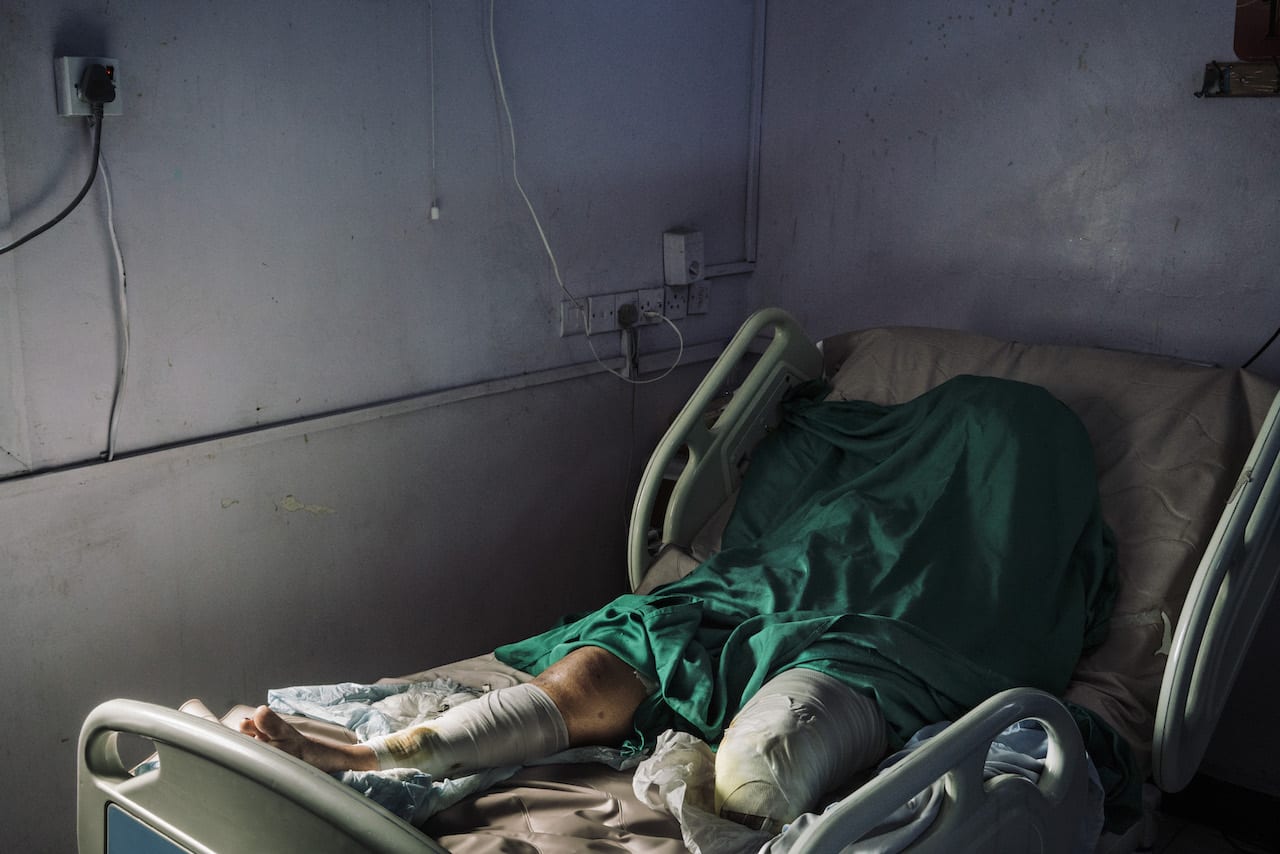“Working in Yemen is extremely difficult,” says Lorenzo Tugnoli, talking to BJP by phone from Kabul. “It’s a country where you have to navigate through various factions, and there are bureaucratic obstacles on both sides. As an example, it took us months just to get a visa.
“And even when you get access, you are not allowed to have much time. For example, after long negotiation we were allowed to go to Hodeidah, but they only let us stay for a few days. I look at my pictures in the port: I was there just for half an hour.”
Even so, Tugnoli has managed to make two extended trips to Yemen – the first for three weeks in May 2018, and the second for five weeks in November and December 2018. During those trips he travelled extensively throughout the country, crossing over the frontline and into territories held by opposing forces. Showing both the conflict and its disastrous humanitarian impact, his images have been published in a series of essays by The Washington Post, and a story pulled out of those images by Tugnoli and the director of Contrasto, Giulia Tornari, has now been nominated for the very first World Press Photo Story of the Year.
It’s an achievement but, says Tugnoli, it wasn’t all down to him. First, he points out, he went to Yemen with the journalist Sudarsan Raghavan – The Washington Post’s Cairo bureau chief and a veteran in North Africa and Yemen, whose contacts on the ground were crucial in gaining access. Second, he went there as an outsider – without the affiliations that could endanger a local photographer, and with the various protections that come with being a Westerner.
“There are local photographers, but I get the feeling that they are risking even more than me by being there,” he says. “Obviously if a journalist from a well-known Western newspaper gets kidnapped, everyone hears about it. But that’s not the case for the local photographers – and local photographers have to live there afterwards.
“But also it’s really risky to go north and south,” he adds. “In the south there is a group of combatants working together in a coalition, but they also all have different interests. You’re constantly trying to tread a fine line between them, not getting too friendly with one or the other. For locals, this is even more difficult, especially if you are travelling on both sides of the frontline. So we were in a particularly privileged position in terms of what we were able to cover.
“In the Middle East, we [Western reporters] are often in a privileged position,” he adds. “I live in Beirut, and it is easier for me than it is for local journalists to travel in Middle Eastern countries.”
And third, he had the support of The Washington Post, which backed the story in a way that’s become unusual in the contemporary media landscape. Foreign photo editor Olivier Laurent and photography director MaryAnne Golon “made this happen” he says, because of their belief in and commitment to the story, long before the rest of the press caught up with it.
“It’s unusual for a newspaper to put so much effort and resources into a story, and I was lucky to be the one they chose to do it,” says Tugnoli. “Because of their commitment, I was able to show a lot of different aspects of it. It is a rare thing for a photographer to have this kind of wide and deep coverage.”
But he adds, while it’s unusual, this kind of coverage is essential if anything of the complexity of this conflict – and of conflicts in general – is to be shown. Journalists are called on to summarise what’s happening and make it comprehensible, he points out, but on the ground, you find that the more you understand, the more you need to say, and the conflict in Yemen is a particularly clear example of this. Often portrayed as a civil war, the military action in Yemen is actually being waged by loose affiliations who each have their own internal divisions, and outside interests such as Saudi Arabia, the United States, the United Arab Emirates, and Iran have also all weighed in.

He points to his shot of a soldier in Taiz by way of an example. Showing a lone soldier holding his position in front of a window, it’s often used to show the coalition forces holding out against the Houthi rebels, who encircle the city. “But our story wasn’t so much about that, it was rather about the fact that there are a lot of different factions in Taiz fighting each other,” says Tugnoli. “The frontline with the Houthis is being neglected because the guys are shooting at each other, and destroying the city in the process.”
Tugnoli modestly puts his World Press Photo nomination down to the sheer scale of his work in Yemen – commenting that “it’s one of the issues that has to be in World Press Photo this year, and we were the only Western media able to get this coverage” – but it’s easy to pick out other possible reasons, from his mix of images of conflict and everyday moments, to his restraint in showing harrowing suffering. Tugnoli says Laurent at The Washington Post has had an important hand in this, creating edits that include “pictures that are more poetic” alongside the “the ones that are more gruesome”; but he adds that he feels it’s essential to “balance these two aspects.”
“It can be a challenge, it’s difficult to find the balance between an image that just wants to shock, and one that can tell the story in a more delicate way,” he says. “But I try to be respectful – to tell the story and communicate the urgency and the tragedy, and at the same time to show the people in a respectful manner.
“For example, I took a photograph of a sick child in Aden,” he continues. “It was part of a story about a hospital in Aden, where there is a shortage of medicine and oxygen, and it is important to show that the hospital lacks basic amenities. But that particular image is interesting because it’s not excessive.”
In fact the issues Tugnoli touches on are the classic critiques of photojournalism – that it’s shot by Westerners, that journalists quickly helicopter in and out, or that they sensationalise their subjects to feed a lurid voyeurism. He’s well aware of the criticisms though, and says they’re often right. “It needs to be said,” he says. “It’s a debate that makes sense. But through debates, photographers can think about what they are doing, and try to have consideration and understanding about what they are saying.
“I’ve been living in Middle East for years, but I’m still an outsider – I still don’t have the right to pretend I’m telling the whole story as someone who comes from this region would,” he adds. “It’s my job, I’m a journalist and I try to tell what’s happening, but I try to be considerate, and also make poetic and beautiful images. It’s important to be sensitive, and acknowledge the complexity of what’s going on.”
www.lorenzotugnoli.com www.worldpressphoto.org



